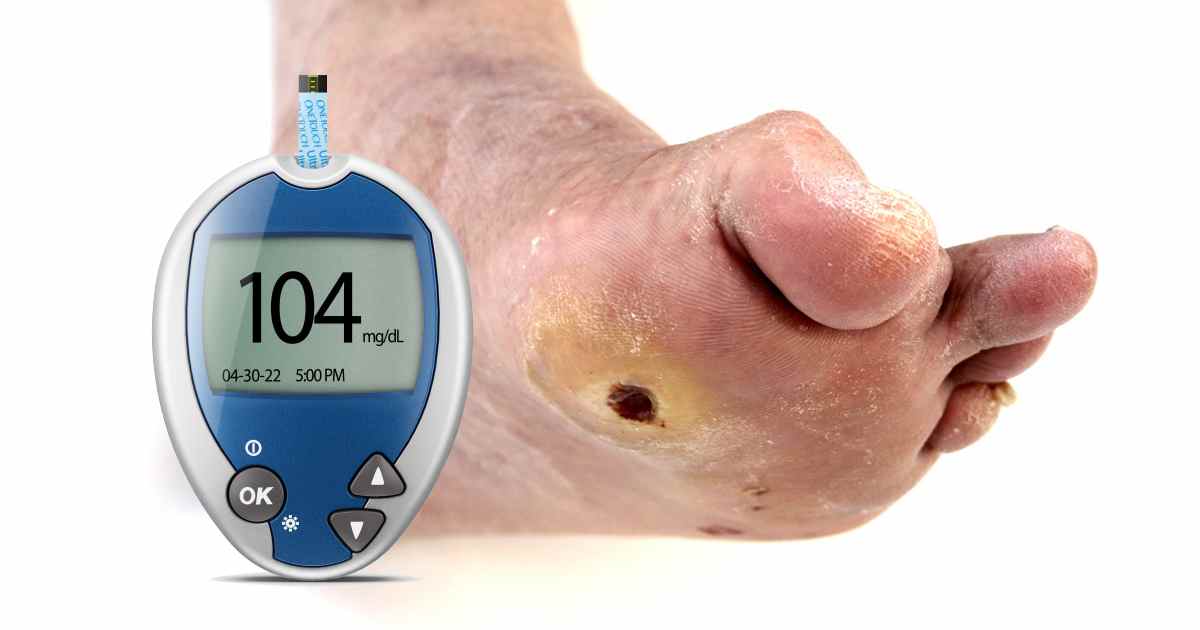Special Offer - Get a flat 5% off ! Promo Code: LMRFREE5. Minimum Order Value Rs. 799. Toll Free Number (9.00 AM to 07:00 PM) || WhatsApp: 8291680965
Special Offer - Get a flat 10 % off ! Promo Code: LMRFREE10 . Minimum Order Value Rs. 799. Toll Free Number (9.00 AM to 07:00 PM) || WhatsApp: 8291680965
Find Effective Treatments for Diabetic Wounds and Ulcers

Diabetes is one of the most common medical conditions that affect a humongous portion of the entire world’s population. According to the WHO, around 77 million individuals above the age of 18 are suffering from type-2 diabetes, with another 25 million languishing as pre-diabetics (facing high risk of becoming a diabetic patient in the near future).
With such grim numbers to look at, it is no surprise that diabetic foot injuries, wounds, and ulcers, are significantly more common than what you may be led to believe. These medical complications call for an entirely different set of protocols that you may be aware of.
In this blog, we will be taking an intuitive look at the various medical treatments that can be exercised when it comes to diabetic wounds and ulcers in this day and age. So, let’s get started.
The significance of diabetic wounds.
Conventional wounds can heal themselves without a great deal of external interference, and that too within a short time span. What complicates matters here is the presence of diabetes in one form or the other.
Cell division plays a major role when it comes to healing open wounds and ulcers, but in this case, normal cell functions are greatly compromised. In most cases, this is brought about by situations like smooth muscle cell dysfunction (essential to healing activities), inadequate production of collagen structures, and the failure of phagocytic cells in removing bacterial growth and promoting growth. Now, these conditions might either occur as isolated cases or as a mix, but what remains constant is the fact that these stop the wound from healing in a natural physiological manner.
In India, a whopping 25% of all diabetic patients contract diabetic foot ulcer within a year, and the worst part about them is the fact that almost 20% of those cases need to face amputations.
Sounds shocking, right? Well, indeed, the statistics are massively disheartening, but on the positive side, you would be glad to know that there are a few ulcers treatment that can be availed of. Let us glance through them.
Diabetic Foot Ulcer Treatment.
Primarily, these wounds can be classified based on their types: Neuropathic, Ischemic, and neuro-ischemic. The core methodology that’s followed to cure these forms of ulcers is as follows.
Surgical debridement.
This is a step of the process that deals with the removal of tissue layers that have become devitalized or necrotic. The primary motive behind doing so is re-epithelialization, redevelopment of tissues, and reducing the plantar pressure on calluses. Moreover, the removal of these tissues stops bacterial growth and aids in efficient antibiotic proliferation.
Dressing the wound.
The woundhealing would depend significantly on the type of dressing that’s being applied. The goal of said dressing is to maintain a moist environment that aids in recovery. Moreover, the said dressing must be able to protect the wound from any foreign contaminants that may be present there.
Now, zeroing in on the right dressing depends heavily on each case that passes through the hospital, and thus, it is up to the doctors to determine what would work and what wouldn’t.
Tackling the infection.
Diabetic patients, irrespective of the type, suffer from significantly weakened immune systems. This greatly boosts the risk of recurring contamination and bacterial growth. Regular monitoring, microbial treatment, dressing, removal of necrotic tissues, etc. are some of the procedures that must be executed on a regular basis to aid with effective recovery.
The risk of recurrence is pretty high when it comes to DFU wound healing, and thus, this is one of the most critical steps of the entire treatment process that prevents that from occurring.
Tissue perfusion.
Oxygenated blood must be able to reach the affected area to aid with an effective recovery, and it is up to the doctors and medical professionals to determine the need for the procedure. For starters, it must be pointed out that diabetic patients experience inefficient arterial blood circulation, something that must be aided with surgical revascularization.
Nutritional regulation.
A diabetic patient undergoing treatment for DFU must adhere to a strict diet that’s rich in protein. Since protein is a key component when it comes to tissue regeneration and muscle formation, constant intake is essential. Besides that, one must keep proper tabs on their blood glucose levels as well. If someone possesses this medical condition, a sugar free cough syrup would be appropriate for them.
Once the aforementioned steps have been performed by a qualified podiatrist, the next step of the process involves getting back into shape. Now, crutches and casts are some of the most common implements that are used to offload the DFUs, but total contact casts are regarded to be the very best for diabetic foot ulcer treatment.
Conclusion:
Diabetic Foot Ulcer is a disease that affects a massive population globally every year, and the situation isn’t much different in India as well. In this day and age, keeping close tabs on and controlling diabetes is the priority no.1 for someone who has it. L’Amar’s Anti-Diabetic range can help achieve just that effectively and efficiently. Our BC 56 Cream is a comprehensive remedy that helps cure diabetic ulcers and injuries. Packed with natural ingredients like Sal, Neem, Karanj, etc. it can be used to heal bruises, cuts, and abrasions as well. Try our exceptional offerings today.


